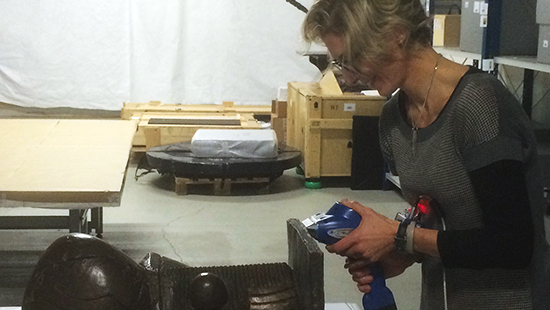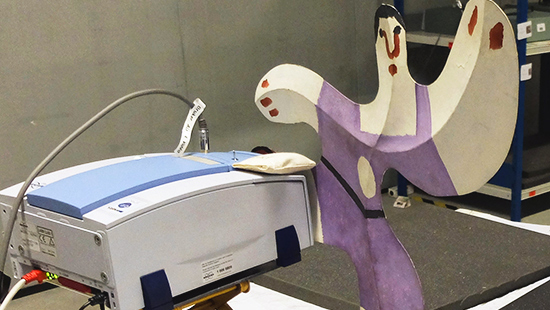About this Project
We have completed the first major material survey and study of the Musée national Picasso-Paris’ world-renowned Pablo Picasso bronzes using cutting-edge, portable instruments. A priceless group of 39 bronzes (cast between 1905 and 1959) and 11 painted sheet metal sculptures (from the 1960s) in the Musée national Picasso-Paris’ collection were non-invasively analyzed with the help of portable instruments and a robust database of alloy “fingerprints”.
The Investigation
The international research team of scientists, art conservators and curators traced five bronzes cast in Paris during World War II to the foundry of Émile Robecchi, a lesser-known collaborator of Picasso’s. They also discovered Robecchi’s alloy compositions varied significantly during 1941 and 1942, likely reflecting the challenging circumstances of the Nazi occupation of Paris. In their study of Picasso’s cast-iron sheet metal sculptures, the researchers are the first to report the use of silver for facial features in a work inspired by one of his wives.
The Process

International Collaboration
“Our project highlights the value of cutting-edge scientific tools and international collaborations in advancing discoveries in art,” Francesca Casadio said. This work was done in partnership with Virginie Perdrisot, curator of the Musée national Picasso-Paris and Clare Finn, a private conservator in London and an expert on the dynamics of fine arts castings during World War I and World War II.

Alloy "Fingerprints"
Using non-invasive analysis of elements at a work’s surface, the Center for Scientific Studies in the Arts has amassed the world’s largest art database of alloy “fingerprints” for early 20th-century fine arts bronzes. More than a decade in the making, the database includes data on 350 works of art by the leading artists that came to Paris from all over the world to achieve the finest casts of their bronzes. This data is key to our “elemental fingerprinting” technique.


